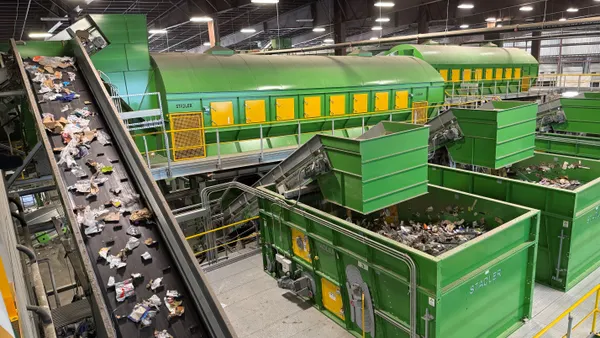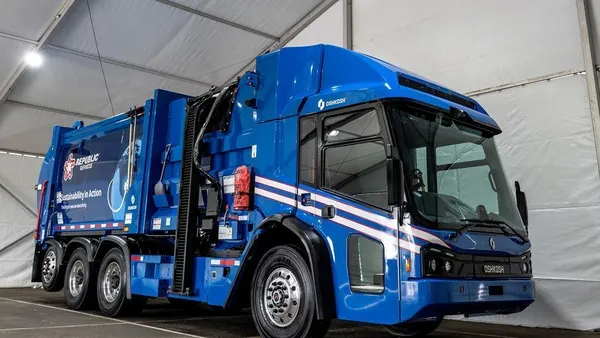Dive Brief:
- Canadian recycling programs are also experiencing challenges with China's scrap import ban and the resulting drop in commodity markets, as reported by The Globe and Mail and other publications. Stockpiling or disposal of various paper and plastics has been reported in the provinces of Alberta, Nova Scotia, Ontario, and Prince Edward Island, among other areas.
- Some of the more recent reports have come from cities including Halifax and Calgary, where thousands of metric tons of material has either piled up or been sent to waste-to-energy facilities. Even in cities that aren't experiencing severe issues, such as Toronto or Winnipeg, the effects are still being felt in terms of pricing and quality expectations. Meanwhile, British Columbian cities, such as Vancouver, have experienced virtually no issues, as reported by Global News.
- This is attributed in part to a successful extended producer responsibility (EPR) system that already encouraged domestic processing. The Canadian Plastics Industry Association (CPIA) has been tracking material markets for months and found B.C. to be far ahead of most others. "The trends showed those organizations that supported domestic processors and became loyal quality suppliers, they’re just not having a problem," Joe Hruska, CPIA's vice president of sustainability, told Waste Dive.
Dive Insight:
Unlike the U.S. and other countries, Canada has traditionally only sent about 21% of its plastic to China. That still left plenty of room for disruption, as evidenced by the recent news, but has also accounted for smaller amounts of stranded material than might have been expected.
The CPIA has been gathering information through a market tool it launched in Nov. 2017 and said reported tonnages have been relatively small. Film and mixed rigid plastics are the most common materials it has fielded questions about so far. The organization continues to work with programs in areas such as Nova Scotia, with an eye toward finding North American processing options rather than new markets overseas, where capacity has filled up quickly.
While Hruska echoed the reactions of other industry trade groups about wishing China had allowed for a longer transition period, he said the best way forward is to think locally.
"Let's ignore them right now and just say we've got an opportunity in Canada and North America in plastics to actually build infrastructure," he said. "I think most of all the capacity hasn't been installed, because possibly some parties were just finding it too easy to ship whatever they had over to China."
Hruska points to B.C.'s EPR program as the "crown jewel" worldwide, and said it has helped companies such as Merlin Plastics invest in new technology because of guaranteed feedstock. Ontario is seen as another province with strong EPR framework. Now that China has begun to close its doors, Hruska sees greater potential for similar programs in Nova Scotia and Alberta, or eventually in all of Canada.
The concept of EPR is still a sensitive one in the U.S. for individual products, let alone broader categories of packaging, but it has begun to gain momentum in recent years. Both California and Connecticut have raised the possibility of such a system for packaging, and work continues to create programs for individual segments such as paint, mattresses and appliances.
The potential for Canadian-scale EPR coming to fruition in the U.S. may still be a ways off, though as the conversation ramps up about how to create more domestic processing infrastructure in North America, this could become a more common point of discussion.















